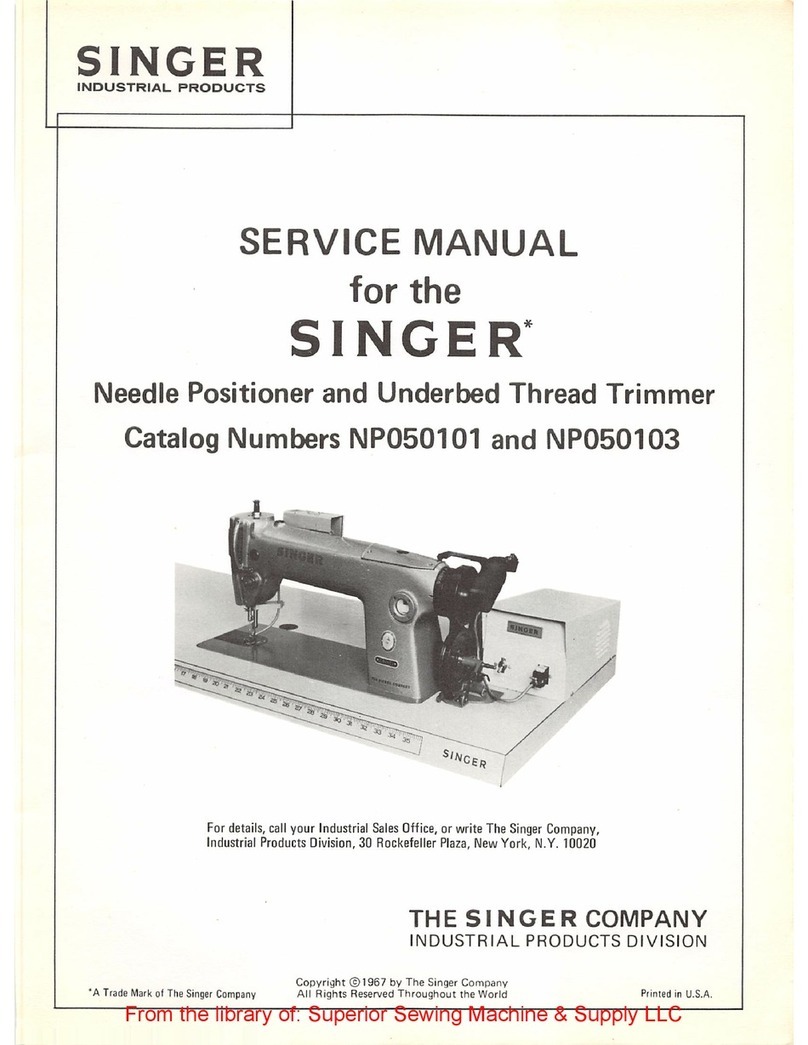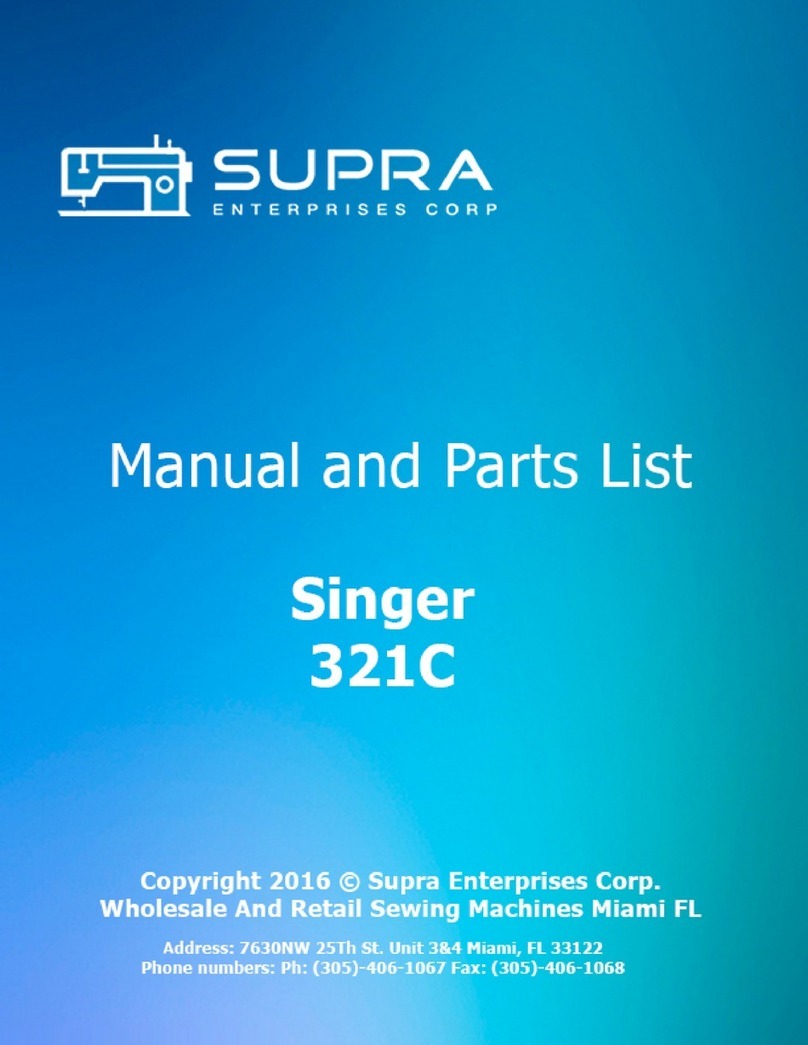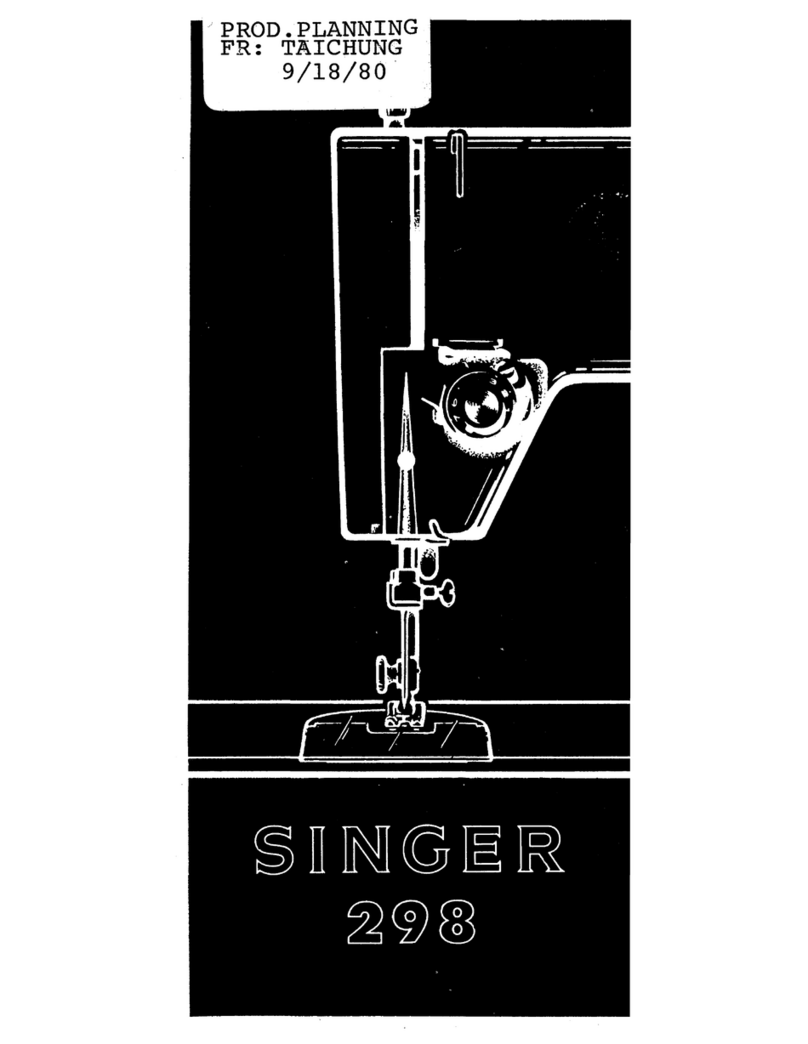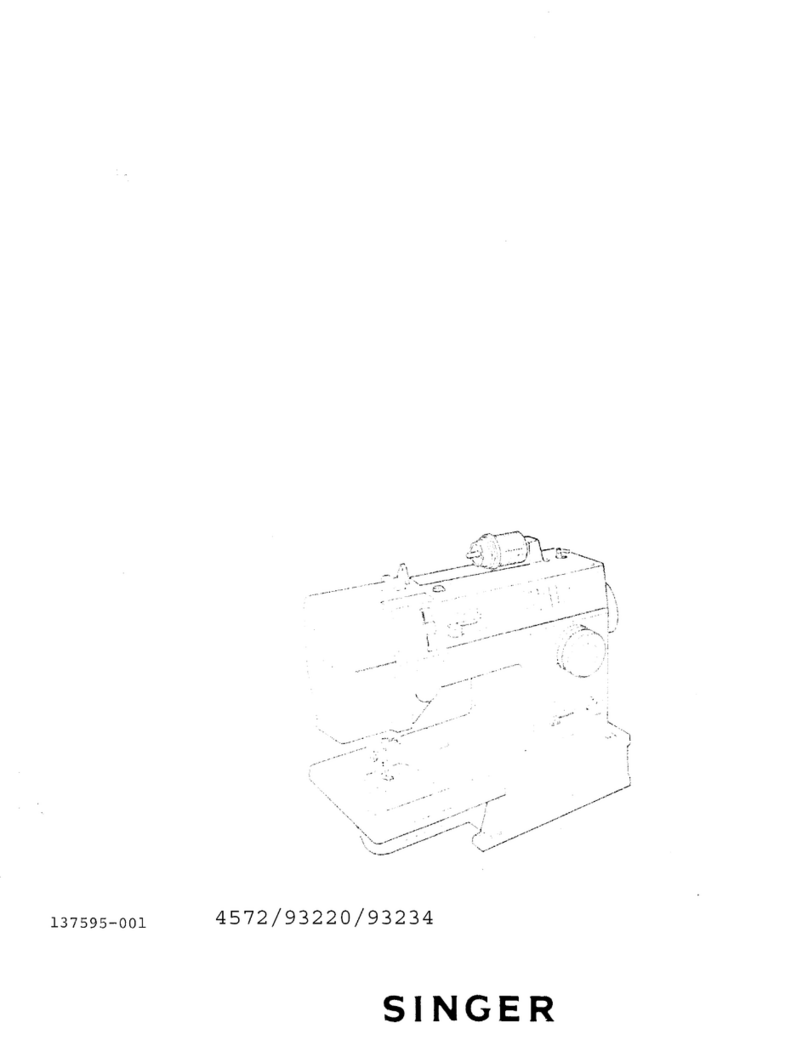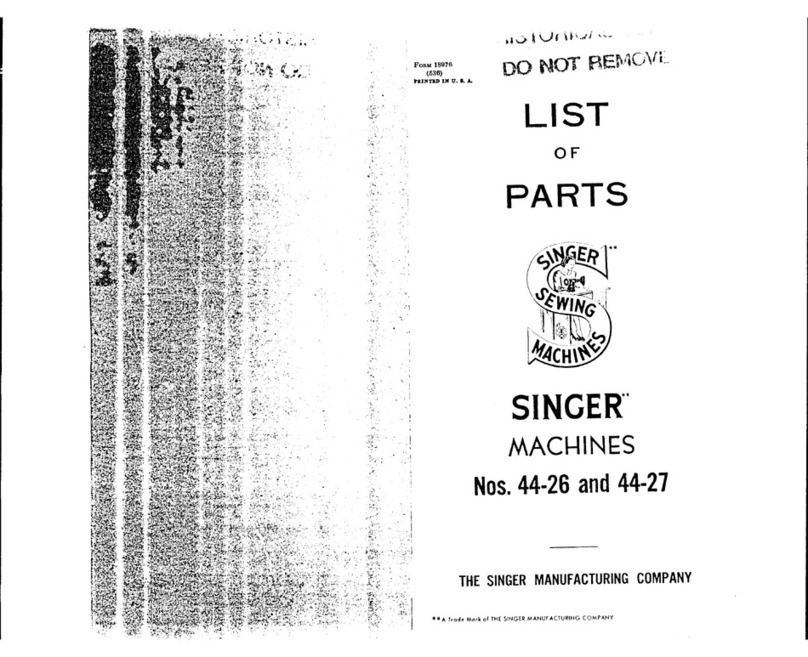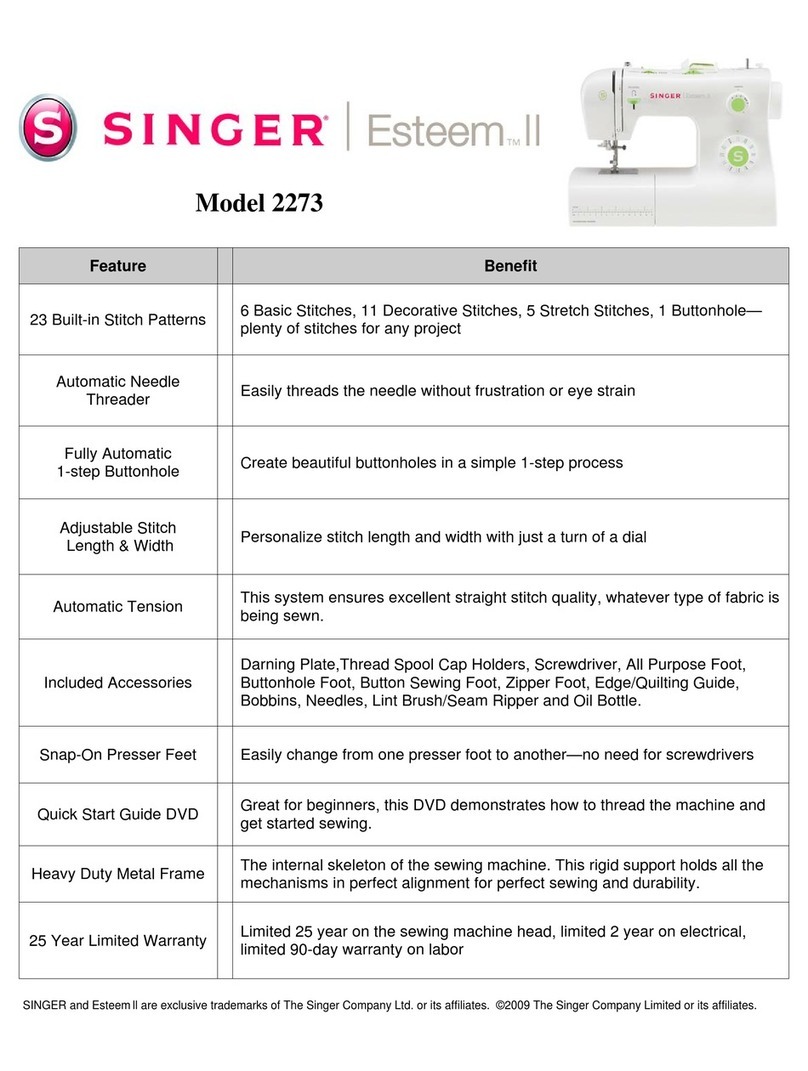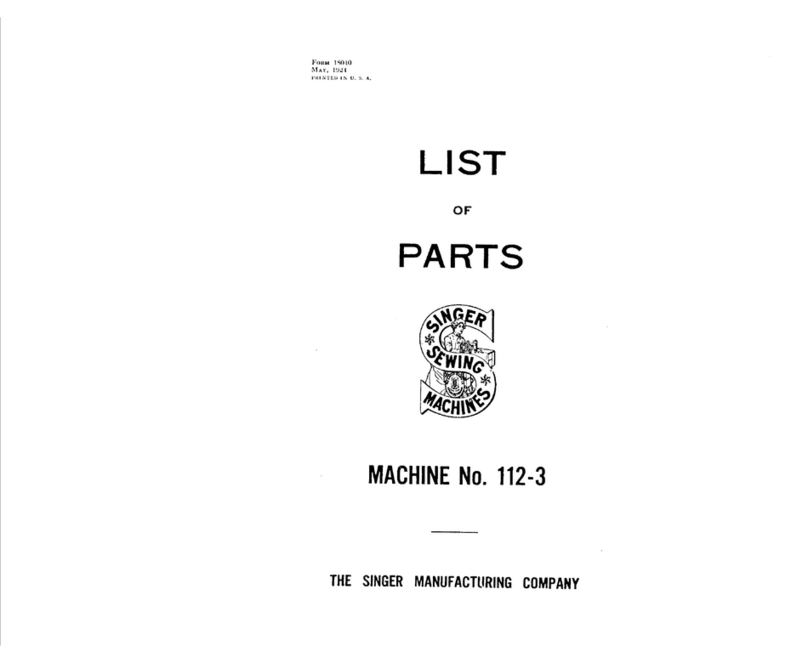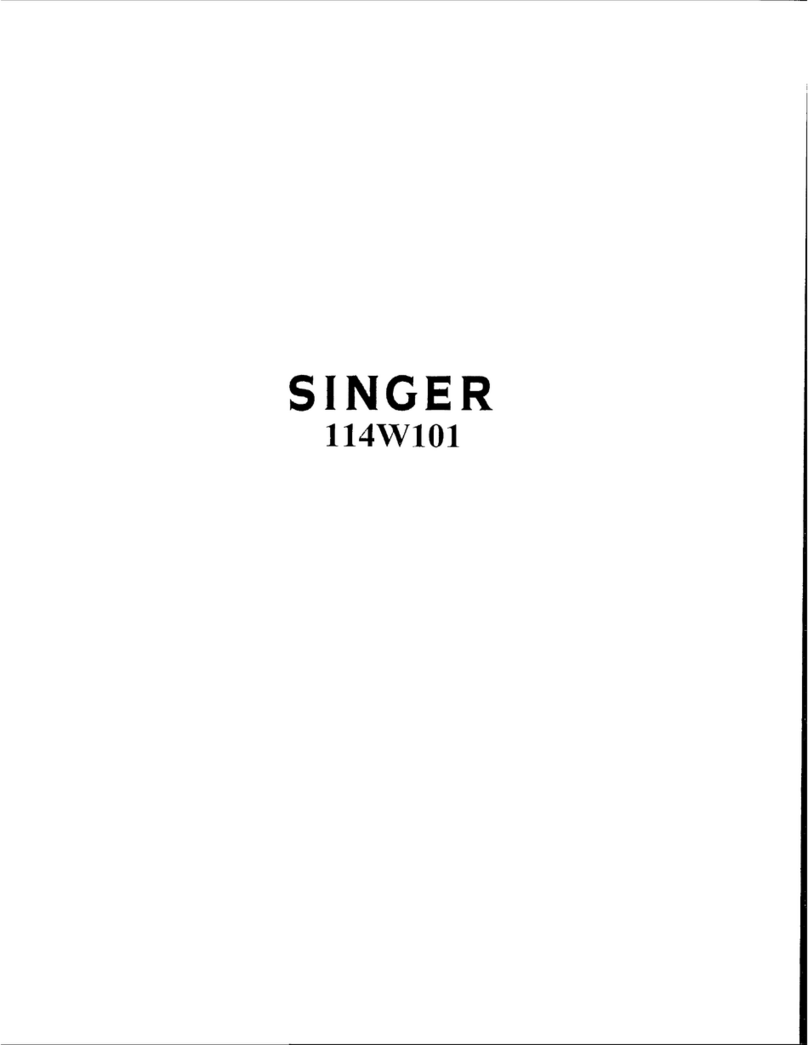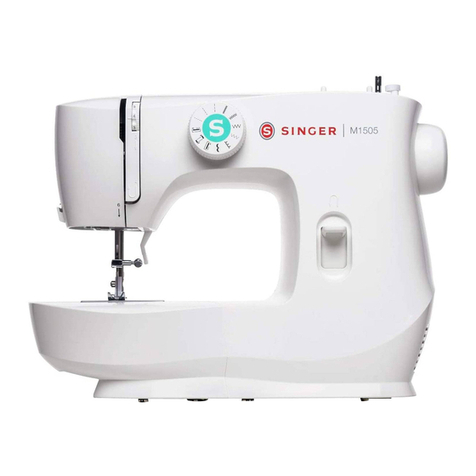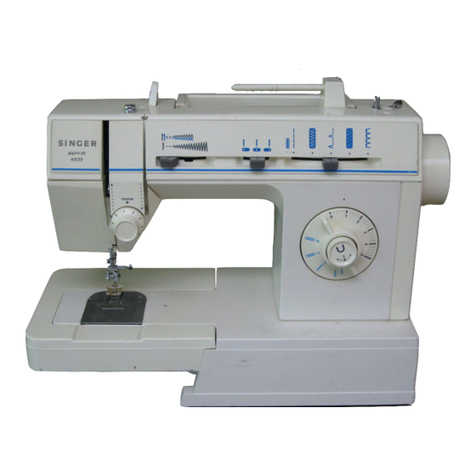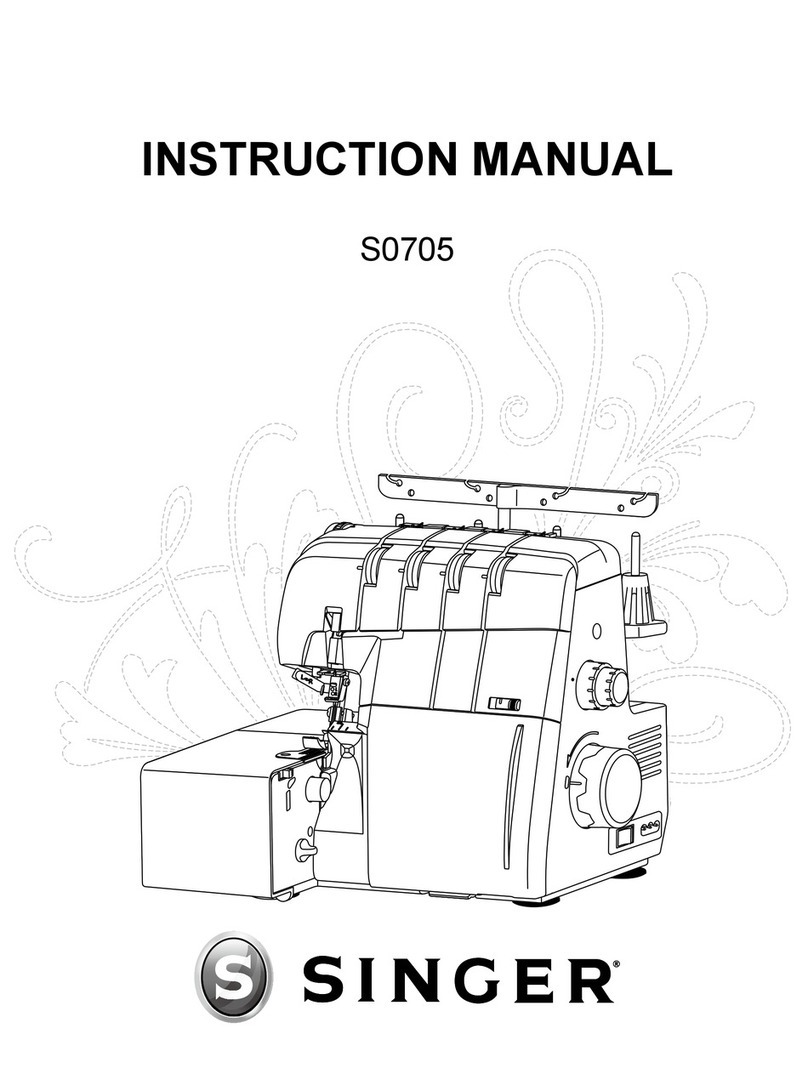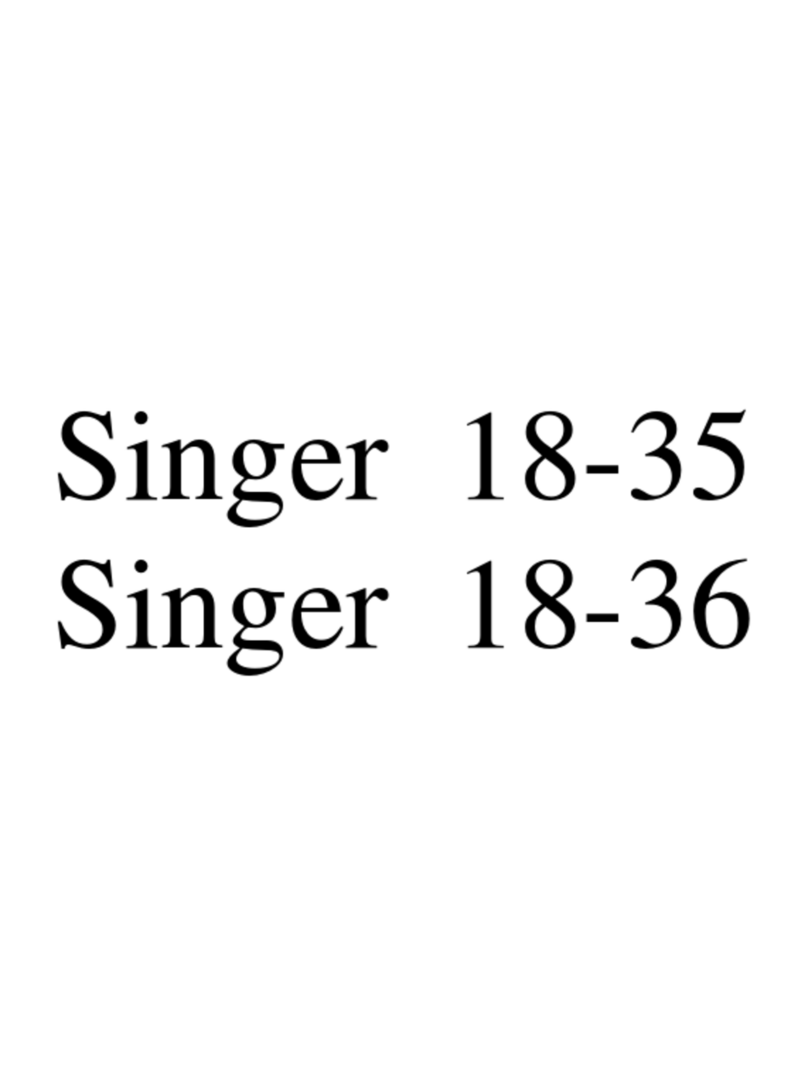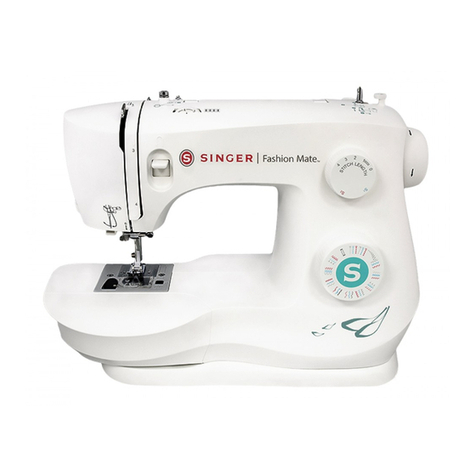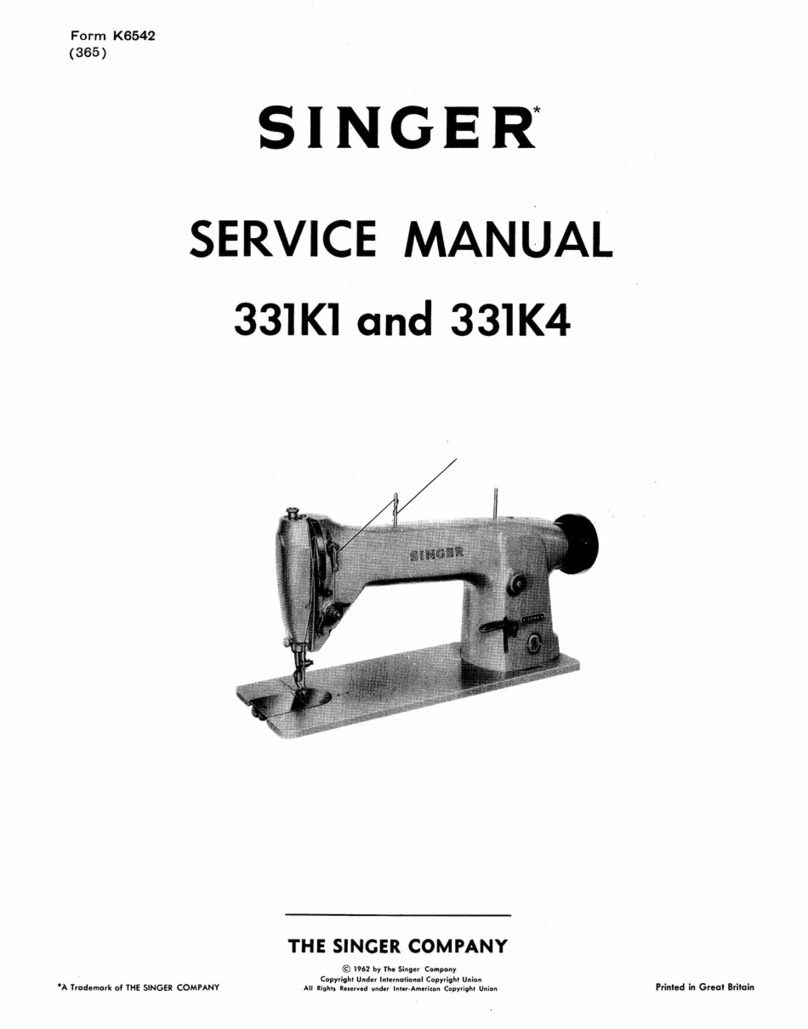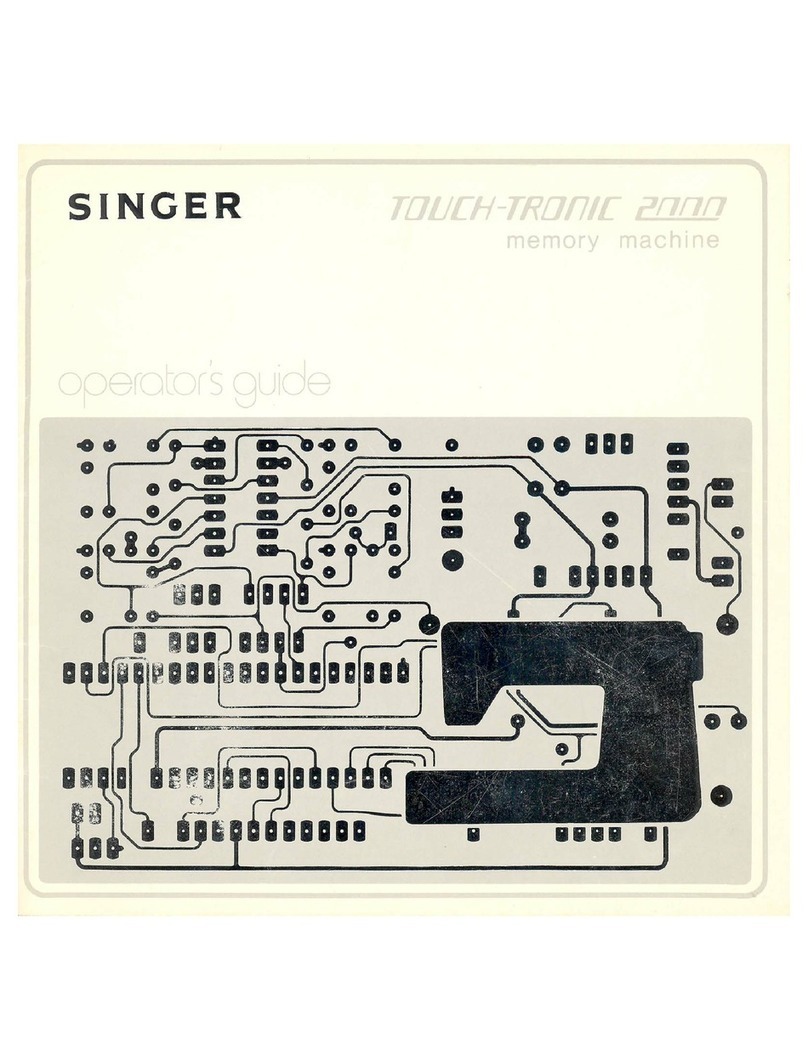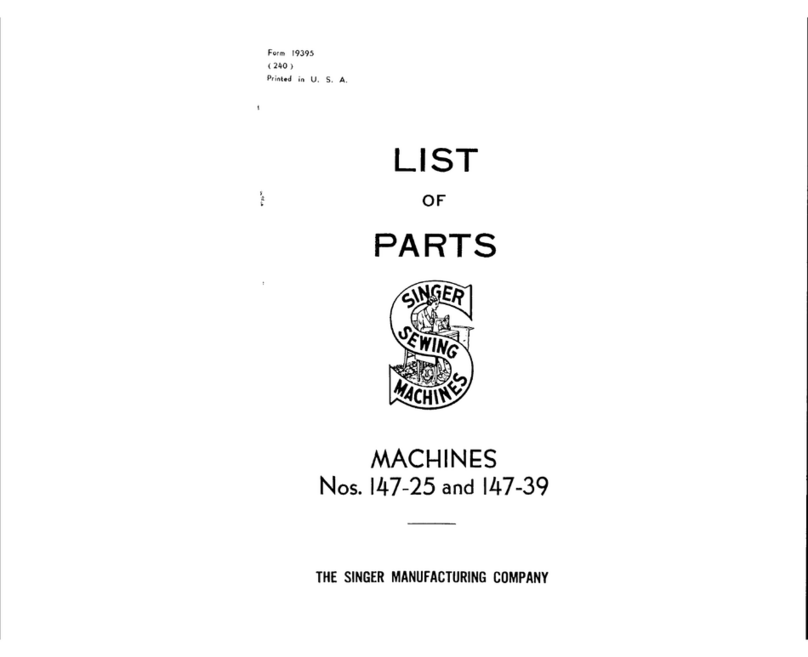Li t of content
Principal parts
How to choose your pattern
of the Machine................................................................................................................................................................................................................. /3
the snap-in sewing table .............................................................................................................................................................................................................5
Two-step presser foot lifter/ .....................................................................................................................................................................9
Inserting and changing needles ...............................................................................................................................................................................................................13
........................................................................................................................................................................................................................18
19
.....................................................................................................................................................................................................................
Straight stitch and twin needle ................................................................................................................................................................................................................. 3
Zigzag stitching ........................................................................................................................................................................................................................................ 4
Blind hem/ lingerie stitch .......................................................................................................................................................................................................................... 5
Sew 4-step buttonholes............................................................................................................................................................................................................................ 7
Applique and blindstitch applique.............................................................................................................................................................................................................33
Quilting functions......................................................................................................................................................................................................................................34
Mending ...................................................................................................................................................................................................................................................35
Staystitching.............................................................................................................................................................................................................................................36
Traditional PinTucks.................................................................................................................................................................................................................................37
Gathering .................................................................................................................................................................................................................................................38
Couching ..................................................................................................................................................................................................................................................39
Maintenance.............................................................................................................................................................................................................................................40
Accessories................................................................................................................................................................................................................................................4
Connecting machine to power source........................................................................................................................................................................................................6
Changing the bulb ......................................................................................................................................................................................................................................8
Attaching the presser foot holder .............................................................................................................................................................................................................10
Winding the bobbin ..................................................................................................................................................................................................................................11
Inserting the bobbin..................................................................................................................................................................................................................................1
Threading the upper thread......................................................................................................................................................................................................................14
Thread tension .........................................................................................................................................................................................................................................16
Reverse sewing/ Remove the work/ Cutting the thread ...........................................................................................................................................................................
Matching needle/ fabric/ thread................................................................................................................................................................................................................ 0
Sewing on buttons.................................................................................................................................................................................................................................... 6
Zippers and piping.................................................................................................................................................................................................................................... 9
Mutlti-stitch zig-zag/ Bar tack ...................................................................................................................................................................................................................30
Free motion darning, stippling..................................................................................................................................................................................................................31
Decorative stitches...................................................................................................................................................................................................................................3
Trouble shooting guide.............................................................................................................................................................................................................................4
Installing
Adjusting presser foot pressure
Raising the bobbin thread

